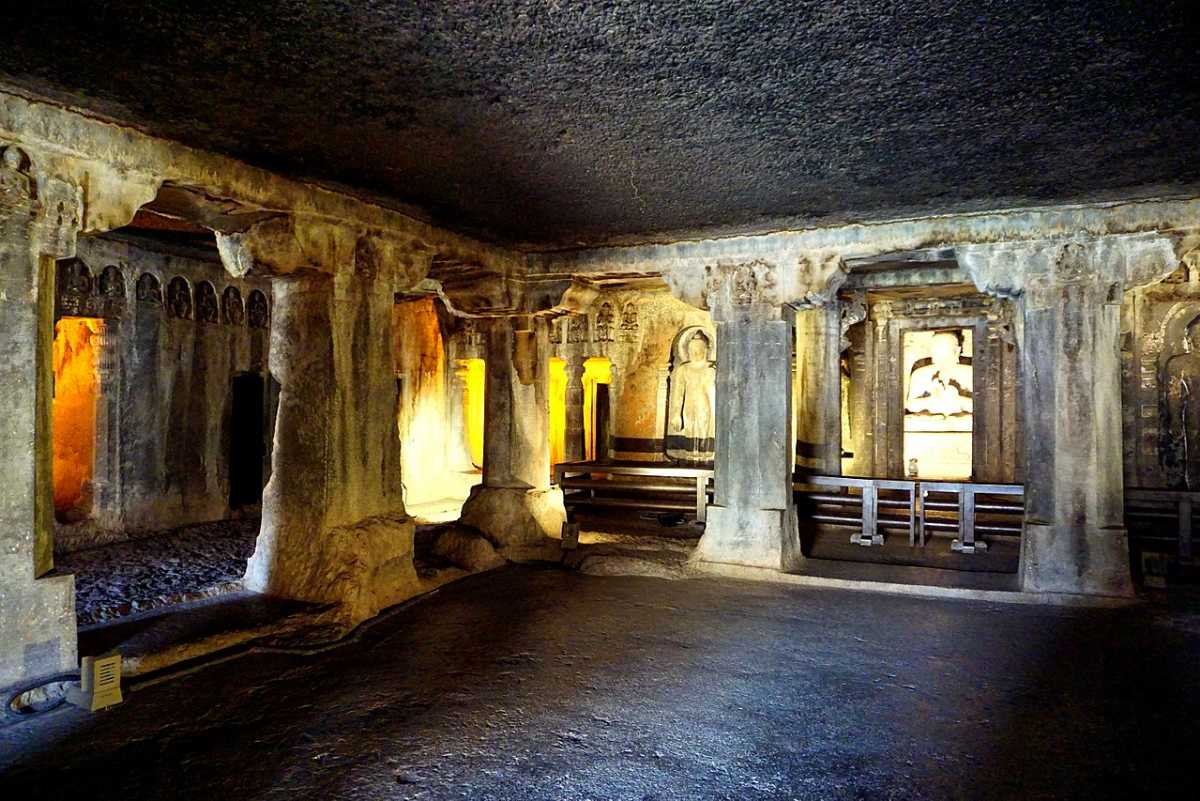
(Source)
The history of the caves is rather interesting. The caves have been built in a set of two phases centuries from each other. The first set belongs to the 2nd century BCE to the 1st century CE, whereas, the second set of the caves were built in the 5th century.
First Period Caves (Satavahana) - Caves 9, 10, 12, 13 & 15A
Caves no. 9, 10, 12, 13 and 15A were the earliest constructed caves. Most scholars and researchers agree that the caves show a heavy influence of the Hinayana or Theravada group of Buddhism. There is a debate regarding the precise time of construction. A group of researchers including Walter Spink estimate the period of construction to around 100 BCE to 100 CE. This group believes that the caves were built under the patronage of the Satavahana Dynasty. Other studies, however, date the period of construction during the reign of the Mauryan Empire.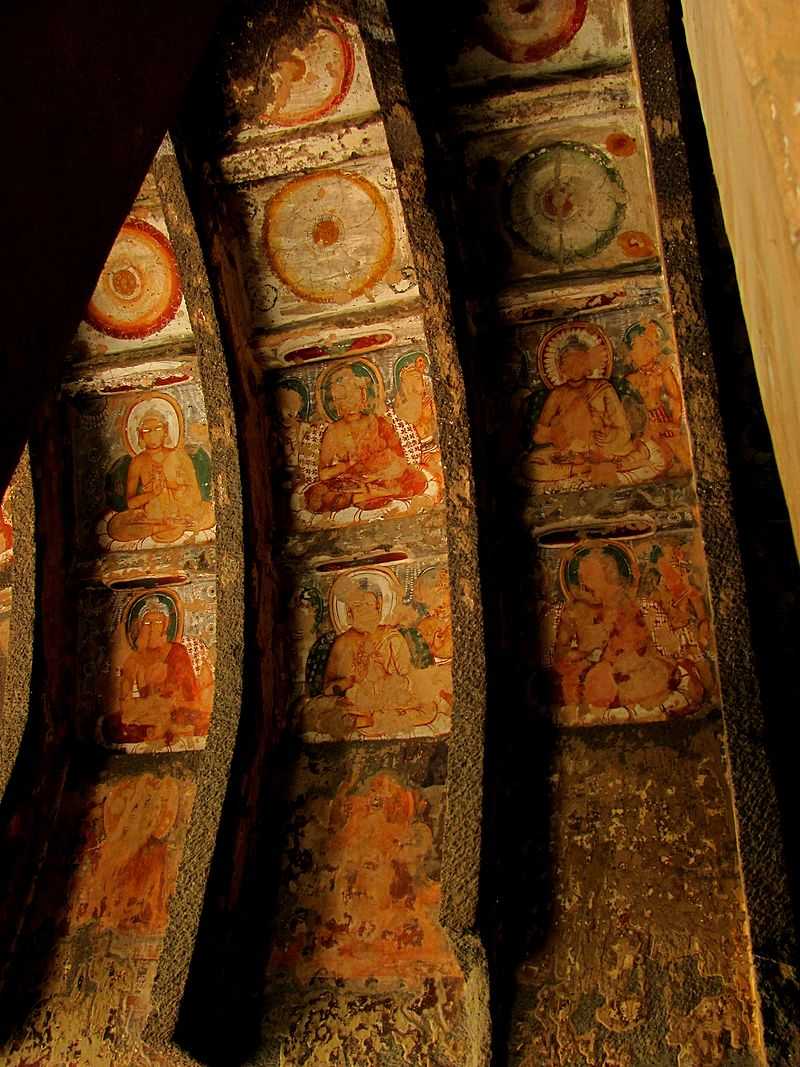
Second Period Caves (Vakataka) - Caves 1-8, 11, 14-29
Also known as the caves from the Vakataka period there is some discrepancy over the exact time of construction. For many years it was thought that the caves were built between the 4th and 7th centuries; however, studies by Walter Spink suggest that the period of construction was, in fact, concise and lasted from 460 to 480 CE. His views and studies have been broadly accepted today.Emperor Harishena from the Vakataka dynasty is believed to be the chief patron of the second period of caves. Caves that fall under this period are no. 1-8, 11, 14-29. These set of caves fall under the Mahayana phase of Buddhism and hence are home to stunning sculptures and paintings. The paintings and sculptures became a source of worship. This phase also started accepting women as nuns, and unlike the Hinayana school which denied pleasure, the Mahayana form was open to the desires between a man and woman. The paintings, sculptures and artworks reflect these influences.
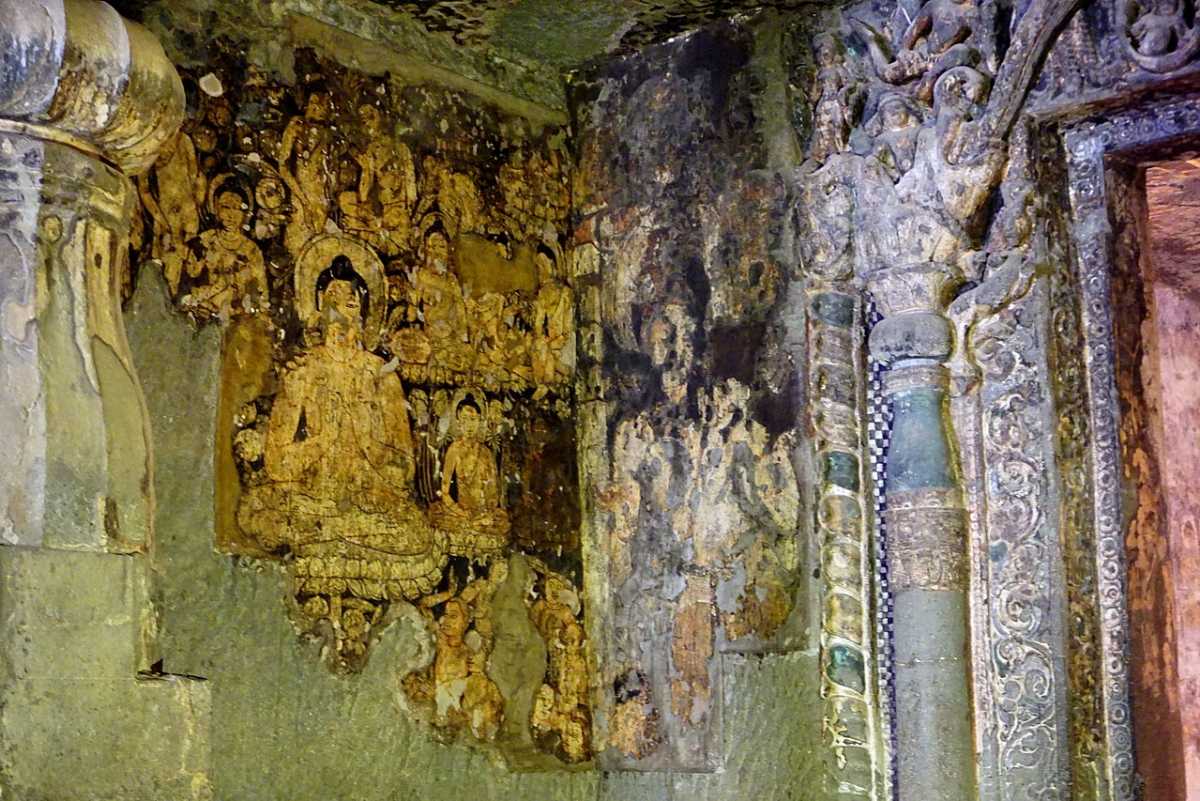
Cave 19, 26 and 29 are chaitya Grihas or the prayer halls. The rest of the caves are viharas or abodes for monks.
Interestingly, not all Caves are complete. According to research, the incomplete caves were abandoned after the death of Harishena. Though there is evidence that the caves were in use, most probably by the monks who resided there, their numbers might have dwindled over time.
According to Spink, the first period caves were left abandoned for more than three centuries before the rule of Harishena. The king along with his Prime Minister Varahadeva and sub-king Upendragupta commissioned the digging of the new caves. The excavation was stopped around 468 because of threats from the Asmaka kings and work continued only in Cave 1 which was commissioned by Harishena and Cave 17-20 that were under Upendragupta. By 472 however, all work stopped as the Asmaka kings took over the territory. Though work started again, it was stopped again at the death of Harishena in 477.

Only Cave 26 continued to be under construction because the Asmaka kings commissioned it. From 478-480, no new caves were built, but a lot was added to the already existing ones. These changes were minor additions, such as adding statues and smaller shrines and were seen primarily on the façade, walls of the inside caves and the returning sides of the entrance. Spink’s chronology was based on the dating of the nearby caves, style of the arts, the chronology of the dynasties and the many incomplete features of the caves. Other historical references of the Ajanta Caves are found in the Chinese traveller Xuanzang’s records, as well as in Ain-i-Akbari a 17th-century account by Abu Fazal.
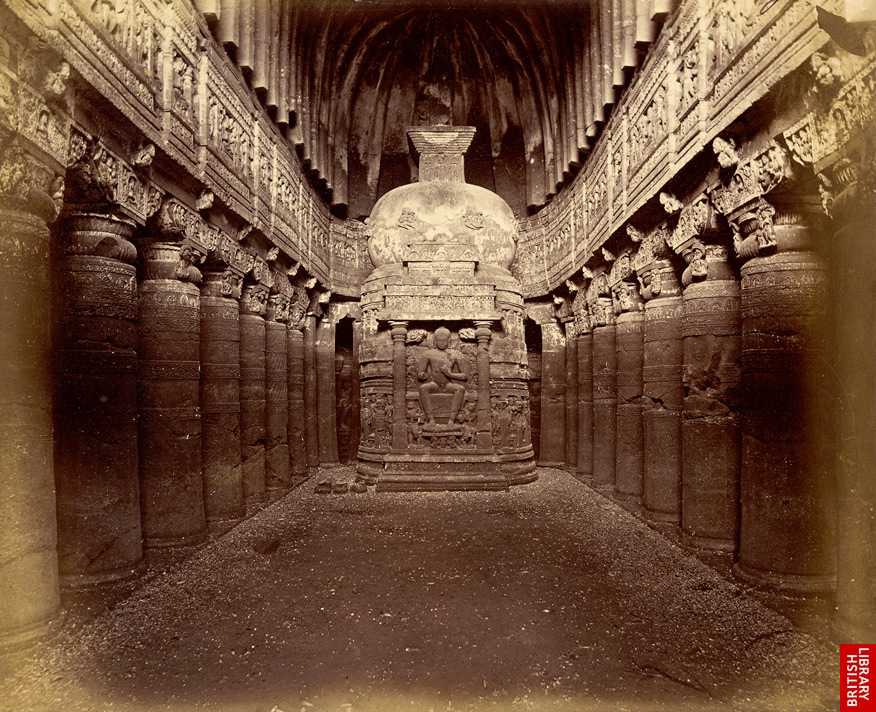
Post-Discovery
In 1819, John Smith happened to chance upon the caves during a hunting expedition. He discovered cave no. 10; however, the locals were aware of their existence. Within a few years from his discovery, the caves became famous for their location; rock cut arts and magnificent architecture.During the British Era, the Ajanta Caves were under the princely state of Hyderabad. Post-independence the government of Maharashtra built better infrastructural facilities to enhance tourism and researches. Today the Ajanta Caves have a Visitor Center with modern amenities, and the ASI runs buses from the centre to the site of the caves.
Paintings and Frescoes
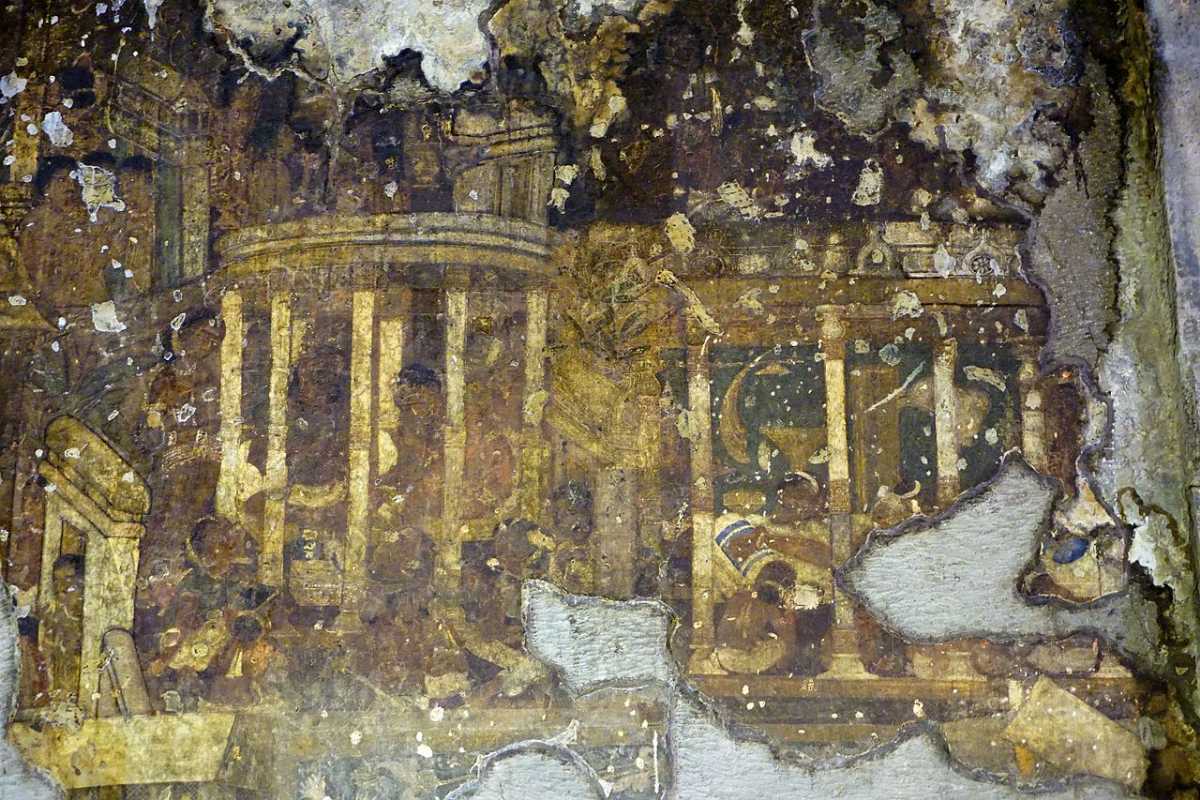
Efforts Over the Years – Deciphering, Restoration and Preservation
Many experts have worked on restoring the paintings over the years, such as Major Gill from 1844 to 1863, John Griffith and Lady Herringham who was assisted by the likes of Nandalal Bose and Asit Kumar Haldar from 1910-1911. Other painters, who contributed to the restoration of the paintings, include Mukul Dey and Ghulam Yazdani.There were many historians and archaeologists whose efforts need to be saluted for their tireless zeal to understand and comprehend the myriad paintings, sculptures, frescos and their meaning. Some of the noteworthy individuals who have contributed to the understanding of the history, arts and preservation of the Ajanta Caves are James Prinsep, Bhau Daji, Walter Spink, Dieter Schlingloff and Manager Rajdeo Singh.
In 1983, the Ajanta Caves became a part of the UNESCO World Heritage Sites. Today the Ajanta Caves are one of the most visited tourist sites.
The pathway bestows a gorgeous view of the caves on one side and the valley on the other. The caves continue to intrigue archaeologists, architectures, historians and tourist alike.
How to Reach Ajanta and Ellora Caves
- Ajanta and Ellora caves are located about 100 km from each other.- Aurangabad Airport is the best-connected airport with several flights from major cities across India.
- Jalgaon and Aurangabad Railway station are the two railway junctions which are well connected with all the cities in India.
- Ajanta Caves are connected to a network of excellent roadways with Mumbai, Pune, Ahmednagar, Jalgaon, Shirdi, Nasik, Dhule, Ahmedabad, Hyderabad, Indore, Bijapur, and Aurangabad.
